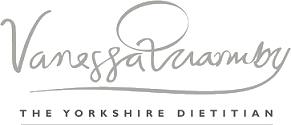Iron – Are You Getting Enough?
Iron deficiency is caused by a diet low in iron or by blood loss e.g. in menstruation. Deficiency is really common in the particular population groups of toddlers and teenage girls in the UK due to their high rates of growth and variable diets. Other people at risk of iron deficiency are:
- Women of child bearing age (i.e. having periods)
- pregnant women
- premature and low birth weight babies
- people with kidney failure
- people with gastrointestinal disorders that affect their ability to absorb iron
- long distance runners and other athletes who do regular intense exercise
Signs of iron deficiency include – feeling tired all the time and weak, pale skin, breathlessness, decreased work and school performance, increased susceptibility to infections and decreased appetite.
If you think you might be iron deficient, ask your GP to do a blood test for ferritin, to see what your stores of iron are like. A haemoglobin test (sometimes performed in a full blood count) will not reveal that you have low iron stores.
According to government experts, these are our requirements:
- 6- to 12-month-olds – 7.8mg
- 1 to 3-year-olds – 6.9mg
- 4 to 6-year-olds – 6.1 mg
- 7 to 10-year-olds – 8.7mg
- 11 to 18-year-old boys – 11.3mg
- 11 to 18-year-old girls – 14.8mg
- 19 to 50-year-old women – 14.8mg
- 19 to 50-year-old men – 8.7mg
- Adults older than 50 years – 8.7mg
- Pregnant women – 14.8mg
Iron is found both in foods that come from animals – meat, fish and eggs; and in plant foods such as green leafy vegetables, lentils, beans, dried fruit, nuts and seeds. Some breakfast cereals in theUKhave iron added to them, and so are also good sources of iron. Iron from animal foods (haem iron) is absorbed by our bodies more efficiently than that from plant foods (non-haem iron).
Eating a varied and balanced diet should ensure you get sufficient iron in your diet. Look at the table below to help you to ensure you are including some iron rich foods every day.
| Food | Iron source |
| Animal sources | |
| Liver (chicken),2 slices (70g) | Good |
| Liver (lamb), 2 slices (80g) | Good |
| Liver pate, 1 serving (50g) | Okay |
| Kidney (lamb),1 kidney (35g) | Okay |
| Beef / lamb (roast), 3 oz (80g) | Okay |
| Pork / chicken (roast), 3oz (80g) | Low |
| Black pudding, 1 portion | Good |
| Corned beef, thick slice (50g) | Low |
| Sardines, small tin (100g) | Okay |
| Pilchards, canned in tomato sauce (55g) | Low |
| Herring, 1 medium fillet (120g) | Low |
| Tuna, small can (100g) | Low |
| Prawns, average portion (60g) | Low |
| Mussels, average portion (40g) | Okay |
| Egg (boiled),1 average (50g) | Low |
| Plant sources | |
| Spinach, boiled (120g) | Low |
| Fenugreek (methi) (25g) | Okay |
| Watercress, 1 bunch (80g) | Low |
| Broccoli / peas, 2-3 tablespoons (80g) | Low |
| 6 Apricots or 3 Figs, dried (60g) | Okay |
| Raisins/ sultanas, 1 tablespoon (30g) | Low |
| Bread, wholemeal, 2 slices | Low |
| Bread, white, 2 slices | Low |
| Bran flakes, 3 tablespoons (25g) | Okay |
| Fortified cereals, 3 tablespoons (25g) e.g. special K, cheerios, weetabix (2 biscuits) | Okay |
| Lentils (dahl), green/brown (100g) | Okay |
| Blackeyed/ kidney beans chickpeas (boiled), 4 tablespoons (100g) | Low |
| Baked beans, Small can (200g) | Okay |
| Hoummus, 2 tablespoons (50g) | Low |
| Tofu, fried (50g) | Low |
| Nuts e.g. almonds, cashew,brazils(25g) | Low |
| Seeds e.g. melon, pumpkin, sesame (30g) | Low |
| Curry powder, 1 teaspoon (3g) | Okay |
| Plain chocolate, 1 bar (50g) | Low |
Foods rich in vitamin C are citrus fruits; all berries; Kiwi fruit, mango, papaya and guava; fruit juices, or fruit drinks fortified with vitamin C; and fresh or frozen vegetables, eaten raw or lightly cooked. To maximise your iron absorption, drink 150 ml of pure fruit juice, or eat fruit or vegetables with meals that contain plant sources of iron.
- Tannins: in tea or coffee – avoid drinking with meals
- Fibre: in high quantities – avoid unprocessed bran
- Calcium: in high quantities – avoid taking calcium supplements with meals
Author












